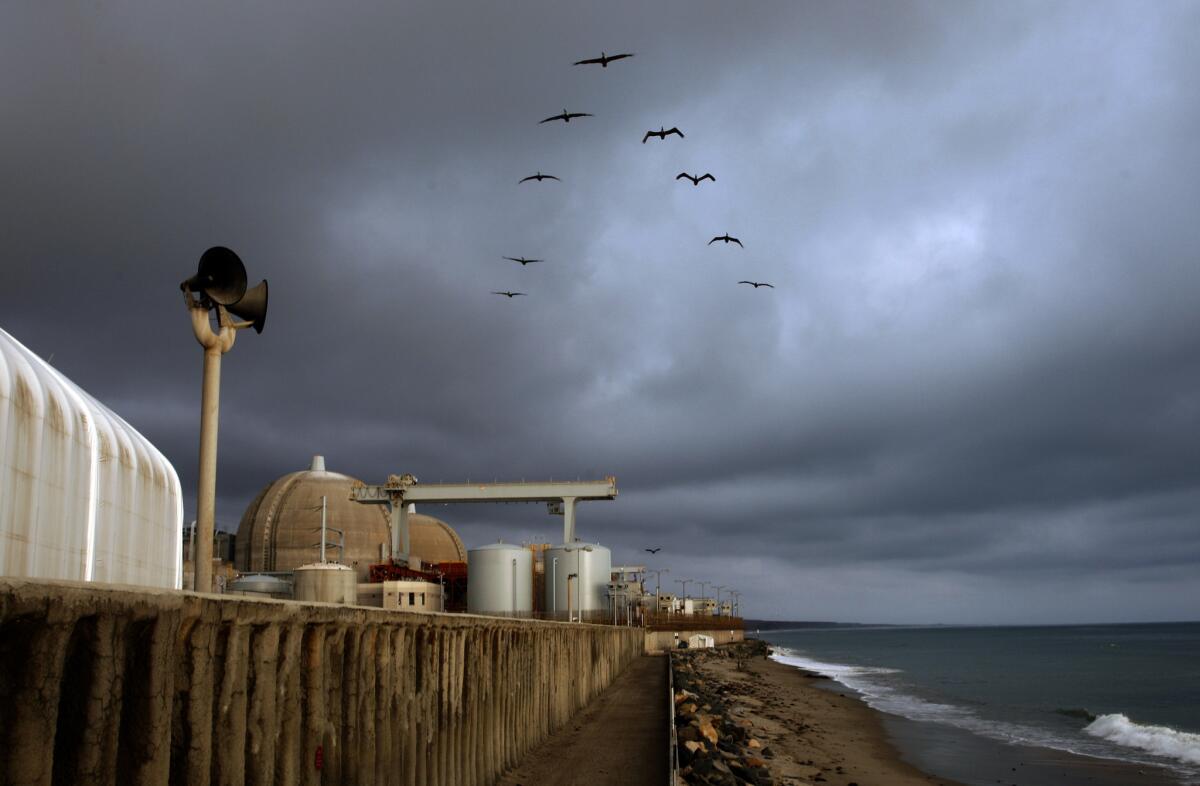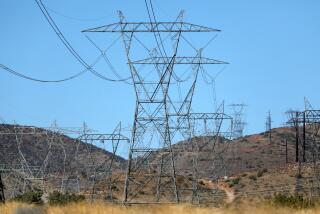State consumer advocate to pull out of San Onofre nuclear plant settlement

Joe Como, director of the state Office of Ratepayer Advocates, said he will pull out of a settlement agreement over the shuttered San Onofre nuclear plant after a judge’s ruling on backroom dealings between facility owner Southern California Edison and regulators.
A multibillion-dollar settlement over the closed San Onofre nuclear power plant took another blow Monday as the state consumer advocate said that he was withdrawing from the deal and would urge regulators to reopen the case.
Joe Como, director of the Office of Ratepayer Advocates, said Monday that he was “very disappointed” by a judge’s ruling Aug. 5 that Edison failed to report communication with regulators about a settlement. Como added that the judge did not go far enough and wrote an opinion that still gives too much latitude for utilities to communicate with regulators outside public view.
“We will pull out of the settlement,” Como said. “We will file papers to that effect as quickly as possible. This cannot stand.”
Como’s office joins the Utility Reform Network, a San Francisco consumer group that reversed its support for settlement and pulled out of the deal in June.
The agreement resolved how the $4.7 billion in costs for shutting down San Onofre would be divided, with Southern California Edison and plant co-owner San Diego Gas & Electric bearing $1.4 billion of the cost and the utilities’ customers paying $3.3 billion.
But now — with two key parties backing out — it could change how much each side will have to pay. This could also lead to renewed investigation into who is at fault for the plant’s faulty steam generators, an issue Edison has largely avoided. One of the generators leaked a small amount of radiation, which ultimately led to the plant’s permanent closure in 2013.
Mark Toney, the Utility Reform Network’s executive director, said it’s hard to predict what action the California Public Utilities Commission will take next.
“We hope that they will realize that the public interest would be served by reopening the investigation and deciding the issues based on the law and the facts,” Toney said.
Constance Gordon, a spokeswoman for the California Public Utilities Commission, said the agency is reviewing requests for a modification of the agreement and a full rehearing.
Edison maintains that the settlement is in the best interest of consumers. Ron Nichols, Edison senior vice president of regulatory affairs, said reopening the settlement would risk increasing costs to consumers.
The Office of Ratepayer Advocates “previously concluded that reopening the San Onofre settlement would not necessarily result in a better financial deal for customers,” Nichols said. “Southern California Edison agrees. We believe that reopening the settlement would create a prolonged period of uncertainty for consumers and utilities, and the litigated outcome could well be higher rates for customers.”
He added that the Office of Ratepayer Advocates and the Utility Reform Network independently concluded that the settlement benefits consumers, and the California Public Utilities Commission agreed.
Stephanie Donovan, a San Diego Gas & Electric spokeswoman, declined to comment, pending a formal filing on the issue by Como’s office.
San Onofre is one of two highly unusual cases involving the loss of a nuclear plant during a steam generator replacement.
As with San Onofre, the Crystal River nuclear plant outside of Tampa, Fla., broke after the replacement of old steam generators using methods that were out of the norm. The closed Crystal River plant, owned by the nation’s largest utility, Duke Energy, also resulted in a settlement agreement that left consumers on the hook for billions of dollars, despite the unusual handling of the generators during the upgrade project.
“These are mega screw-ups,” said Peter Bradford, a former member of the U.S. Nuclear Regulatory Commission who testifies on utility matters across the country.
What separates San Onofre even from the Crystal River case are revelations of secret dealings between the California Public Utilities Commission and Edison about crafting a settlement.
A state attorney general’s investigation revealed that an Edison executive and the commission’s president at the time, Michael Peevey, discussed a settlement of San Onofre closure costs during a meeting at a hotel in Warsaw. The meeting and other communications prompted investigations by the U.S. attorney and the commission itself.
On Aug. 5, CPUC Administrative Law Judge Melanie Darling ruled that Edison representatives engaged in 10 unreported communications with one or more commissioners or their personal advisors. The communications, Darling said, related to the payment of costs related to the January 2012 shutdown of the San Onofre plant.
Como said he objects to Darling’s suggestion that it is acceptable for utilities and regulators to meet — and that not all discussions about pending matters have to be reported.
“That leaves holes that you can drive a truck through,” Como said, adding that he believes all meetings and talks need to be reported. The PUC has scheduled a public hearing Wednesday in San Francisco to review the rules governing communication between commission staff and those they regulate.
But rescinding the settlement agreement and reopening the San Onofre case will be a more harrowing undertaking. Billions of dollars are at stake as further investigation could shed more light on who is responsible for the installation of the faulty steam generators.
State and federal regulators bypassed the question of fault after Edison decided in 2013 to decommission San Onofre. The U.S. Nuclear Regulatory Commission determined in July that requests for review of Edison’s role were “moot” because the plant no longer operates.
“Edison had a perfectly good, well-running power plant and they drove it into a wall,” said Arnie Gundersen, a nuclear engineer who served as an expert witness regarding the handling of San Onofre’s generators.
If the case is reopened, Como and Gundersen said, whether Edison made reasonable decisions will be a key factor in determining how much the utilities and customers should each pay.
“Were Edison’s decisions prudent?” Gundersen asked. “If they were prudent, they should get a large percentage of their money back. But I don’t think it was prudent.”
ivan.penn@latimes.com
More to Read
Inside the business of entertainment
The Wide Shot brings you news, analysis and insights on everything from streaming wars to production — and what it all means for the future.
You may occasionally receive promotional content from the Los Angeles Times.











